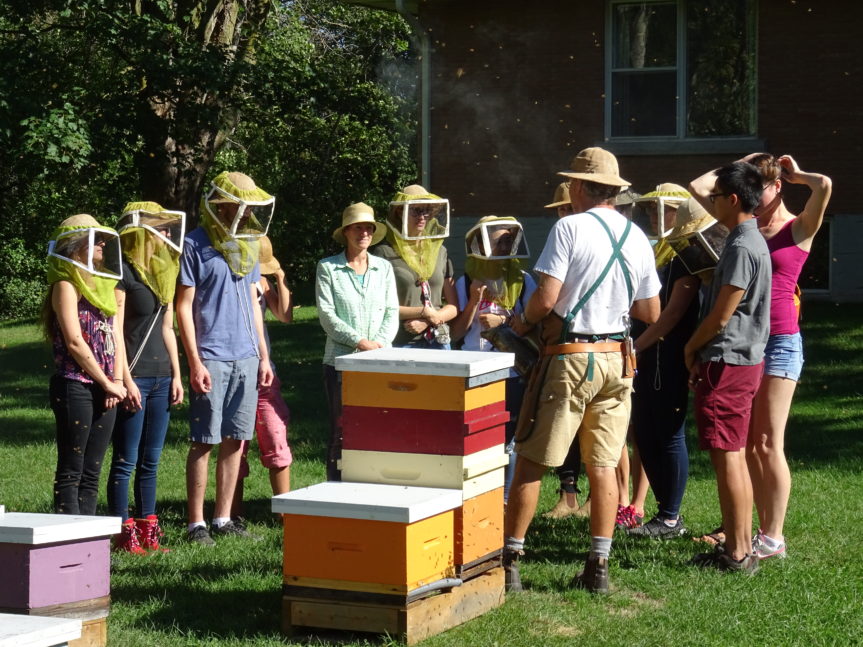


We started the day off at the Honey Bee Research Facility, where we learned about topics such as: how smoke calms bees, different jobs that bees do, and larvae. We even got to pet the fuzzy little honeybees and try some of the honey straight from the comb, which all of us really enjoyed! Afterwards, we were allowed to try some goldenrod pollen which was semi-sweet and soft, but the truly outstanding part of that was seeing the parasite that affects honeybees walking along the pollen (it’s a miniscule grey dot so it may be hard to see)


Paul gave all of us a sample of honey to take home with us at the end of the day as well!
We left the research facility and took a scenic walk to the learning centre near the Arboretum where an exhilarating, eventful, yet somewhat frightful hour would begin. All of us received bug identification charts, and a net and were told to go out in small groups and catch an insect to present in front of the class at the end of the allocated time. Some bugs included: spittlebugs, milkweed bugs, black and yellow garden spiders, and praying mantises. All in all it was a tiring, yet eye-opening day! I think we’ve all learned to appreciate nature more.

(Two praying mantises mating)









You must be logged in to post a comment.